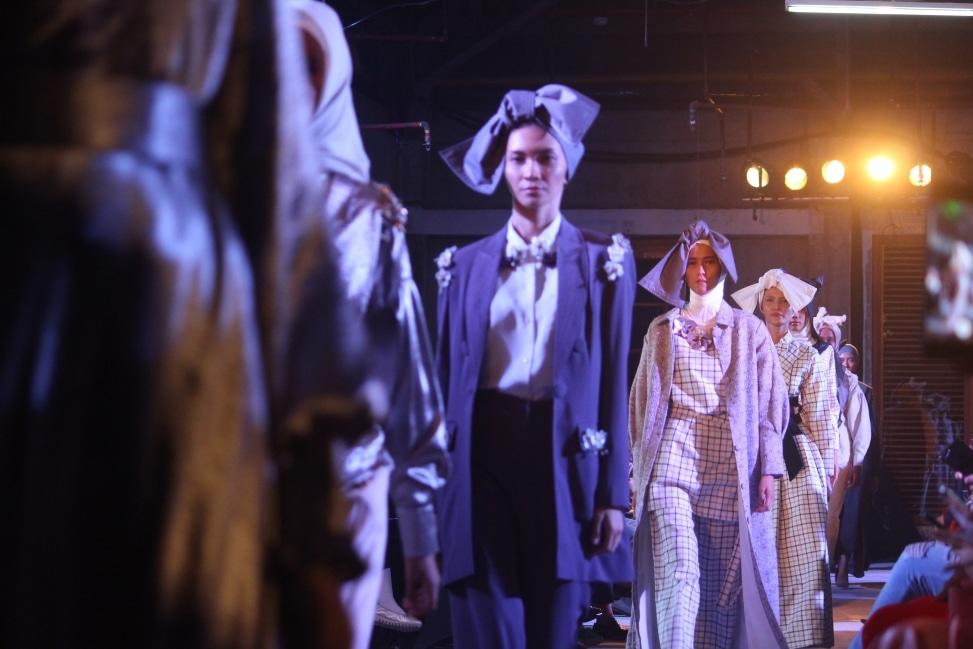Who hasn't heard of fashion week? This iconic industry phenomenon has become an institution for fashionistas over the decades. From the Parisian catwalks to the New York front row, this seminal event is synonymous with glamour, high fashion and top designers.
To find out all about Fashion Week, Superprof looks back at its history and highlights. The number of shows in a season in New York, London, Milan and Paris 410 according to historian Olivier Saillard.

What is Fashion Week?
First of all, for those who don't know what Fashion Week is, a quick reminder.
Fashion week is an integral part of the fashion universe. It is an opportunity for designers (stylists and major fashion houses) to present their latest collections.
As the name suggests, for a whole week fashion designers hold shows where they show the public and the media their upcoming collections.
Indeed, during fashion week, do not expect every collection for the current or upcoming seasons. The autumn-winter collection is displayed in February-March and the spring-summer collection in September-October.
Fashion is always one season ahead! The collections presented by the big houses serve as inspiration for the more accessible brands and set future fashion trends.
Therefore, the silhouettes presented at each fashion show are only available in shops a few months later. However, in 2010, faced with copies of fast fashion brands and the development of social media broadcasting live fashion shows, many fashion houses are seeking to reduce this delay.
Since 2016, Burberry, Tommy Hilfiger and Tom Ford have been putting all the pieces of their collection on sale the day after the show with the slogan "See now, buy now".
Traditionally, the first week starts in New York, then London and Milan and finally Paris, the fashion capital.
On the catwalks the following categories are presented :
Autumn-Winter Spring-Summer Women's ready-to-wear fashion week February/March September/October Haute couture fashion week July January Men's ready-to-wear fashion week January June
Who Created Fashion Week? Now that you know what fashion week is, let's see how this week has evolved in the history of fashion.
Fashion Week was born in the 19th century, at the height of the industrial revolution. Paul Poiret and Charles Frederick Worth were at the origin of this emblematic event in the fashion world. These two great designers are known as the fathers of fashion week.
Young fashion designers at the time had the brilliant idea of presenting their creations on live models. The social evenings were transformed into performances, offering a unique spectacle to upper-class society and allowing French "mode" to be showcased.
This type of affair was a success and in 1868, the Chambre Syndicale de Haute Couture, now known as the French Federation of Haute Couture and Fashion, was created with the aim of further developing the fashion universe.
During the Second World War, the United States took the opportunity to promote American fashion.
In 1948 in New York, Eleonor Lambert, a fashion publicist and journalist in the contemporary art scene, launched Press Week. This occurrence is the true ancestor of fashion week.
She invited all the New York designers to parade at the Plaza Hotel under the eye of the press. The repercussions were international, which led to Press Weeks being institutionalised two years later.
In 1958, in the face of American success, Italy joined the adventure with the aim to elevate the Italian fashion industry, then in 1984 it was London's turn to join the "Big Four".

In What Year did the First Fashion Week happen?
Historically, it was Paris that launched the concept of the fashion show and made models wear the highly anticipated collections.
However, it was in New York that the first gathering around the major fashion shows took place and that this event served as a venue for the presentation of the major designers' collections to the media.
The first fashion week was therefore held in New York in 1943 and allowed the United States to emancipate itself from Parisian fashion, rallying the great names of style unable to travel to Paris during the Second World War.
Thanks to its international influence in fashion, New York could finally financially support young designers, giving them the opportunity to make a name for themselves and launch their first collections.
In Paris, it was not until 1973 that the first fashion week as we know it today was organised. The first Parisian high-fashion houses to participate were :
- Givenchy,
- Dior,
- Cardin,
- Saint Laurent,
- Ungaro.
In the 1980s, François Mitterand wanted to promote the French art of living throughout the world. Fashion was an ideal vehicle for this.
Jack Lang, Prime Minister of Culture, wanted Paris to become the capital of fashion again. He reinstated fashion week and gave his full support to young designers.
A new generation of designers was born and brought the Parisian catwalks to life. In Paris, fashion became associated with the elitist and avant-garde universe of art and many museums became the playground for the catwalks of the fashion shows.
Moreover, the square courtyard of the Louvre hosted all the Parisian fashion shows for ten years.
As time goes by, the most emblematic places in Paris are used as podiums for the most iconic brands.
When and Where does Fashion Week Happen?
To attend the shows, go to New York, London, Milan and Paris in chronological order. These major cities are home to all the leading designers and iconic fashion houses of the moment.
Each of these fashion weeks is unique and presents a particularity in the fashion trade.
In total, Fashion Week takes place six times a year in each fashion capital.
However, Haute Couture Fashion Week is only held in Paris. It is an opportunity to present unique models, dressed to impress in entirely handmade garments from the high fashion workshops to a rich clientele. The students of the Paris sewing courses never miss a show!
Apart from the Big Four, there are more than one hundred cities that hold a fashion week. From Barcelona to Stockholm, every country wants to see its fashion shine and resonate with millions. So why not take a sewing course and have a chance at joining the world's greatest designers?

What is Fashion Week 2.0?
Fashion Week is an opportunity to attend sumptuous shows. It has become an unmissable event, and many students of online fashion courses dream about it - with its catwalks that look like a show.
Each fashion house, in addition to creating a whole collection for each show, creates an ever more sensational scenography. The opportunity for the houses to show their DNA and their aesthetic values during this performance.
However, the fashion week shows are not open to everyone. To get in, you have to be a fashion professional, a journalist, a buyer, a celebrity or an influencer.
Indeed, only the best customers, celebrities and reporters are invited to promote the brand's image. With the development of digital technology, influencers and digital personalities play a major role in showcasing and advertising clothes to thousands.
By extension, everyone can now follow fashion shows digitally. The privileged few on the front row share their experience of the show through social networks, spreading the latest trends to the masses.
Also, with the internet revolution, some designers decided to broadcast their shows live on their websites. The precursor: Alexander McQueen in 2009.
In parallel to the official calendar governed by the fashion federations, off-site shows are also organised. Etam Lingerie in Paris or Victoria's Secret in New York takes advantage of this to organise a fashion show and attract the media present for the major houses and brands.
Design and originality are not only present on the catwalk. Off of the catwalk, fashionistas and style-lovers wear trendy looks.
Fashion photographers often dedicate an editorial to these street looks, which are very popular on the web. On the agenda are sharp and extravagant looks.
To sum up, fashion week in a few key dates can be distilled by:
Dates Events 1858 Paul Poiret and Charles Frederick Worth presented their collection of live models to upper class society. 1868 Creation of the Chambre syndicale de la haute couture parisienne. 1943 The French fashion industry was immobilised by the Second World War, the right moment for Eleanor Lambert to found Press Week in New York and turn the spotlight on American fashion. 1957 The first fashion week in Milan arrives. 1973 The Chambre Syndicale de la Haute Couture Parisienne becomes the Fédération Française de la Couture which organises the first Paris Fashion Week. 1984 London joins the Big Four. 2016 Burberry's "See now, Buy now" approach, where the collections are offered for sale at the end of the show. 2009 First live broadcast of an Alexander McQueen fashion show on the brand's website. 2020 The majority of the shows are broadcast on social networks.















